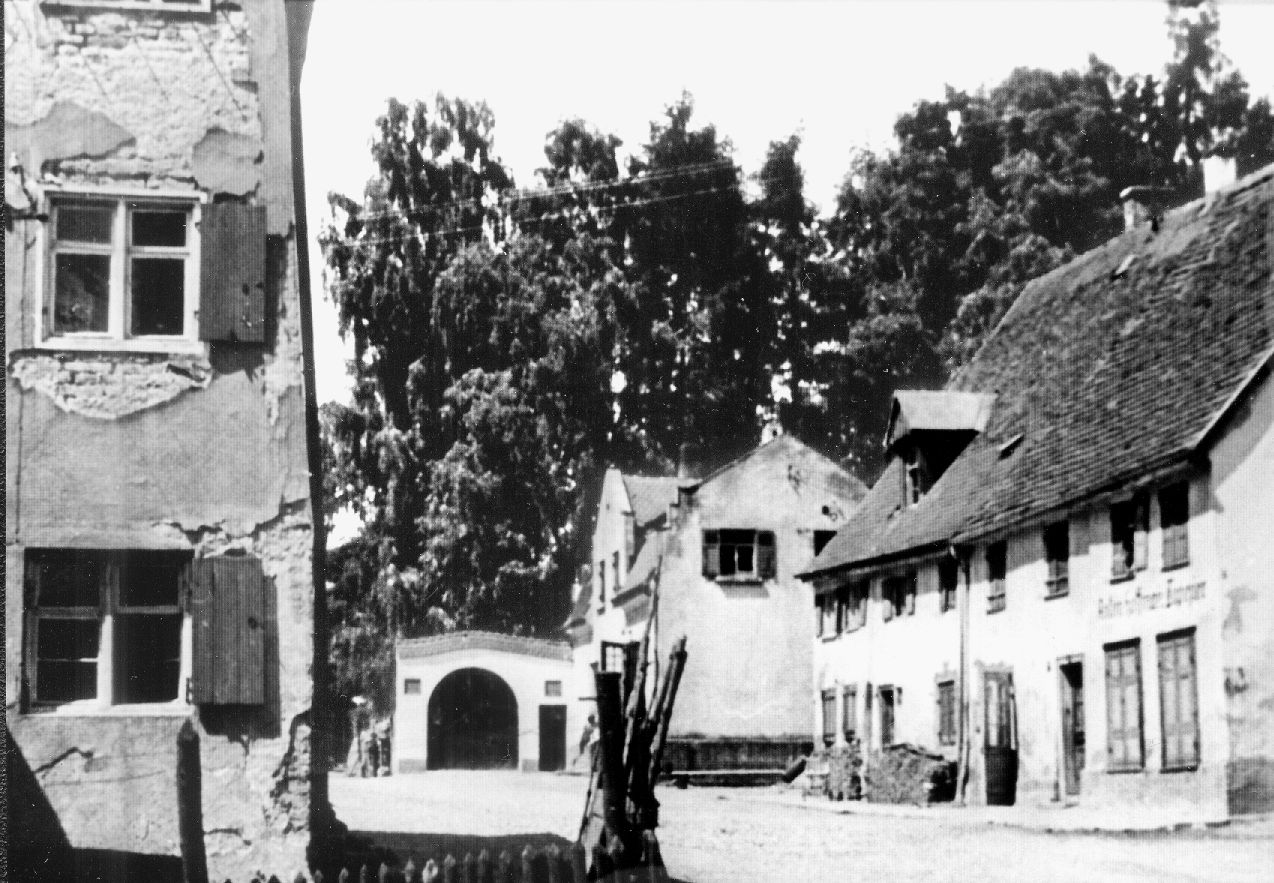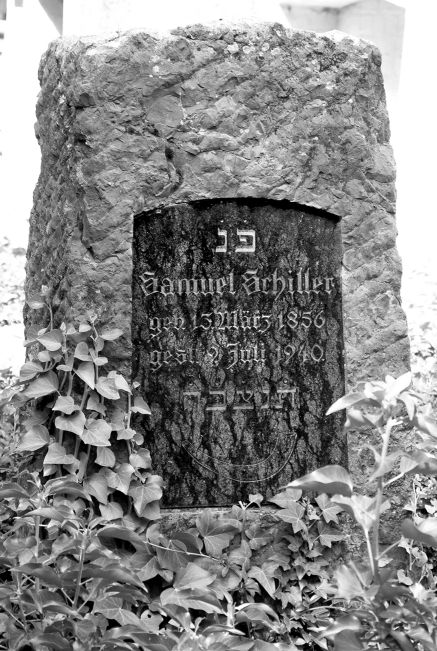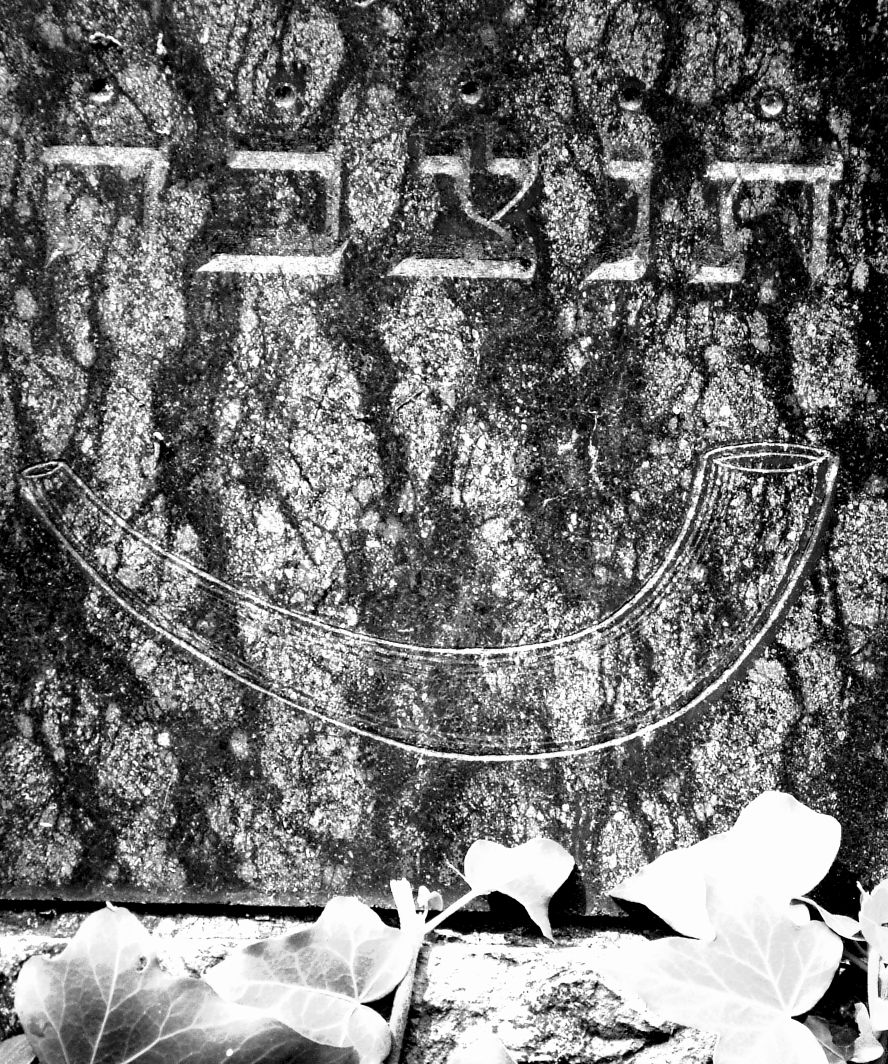 SCHILLER,
Samuel,
SCHILLER,
Samuel,
The Jewish
Community
of
La
Book Pages 461 - 463
Translated by Richard D. Oppenheimer
ELISABETH
RÖHRICH
Samuel Schiller born on March 13, 1856 in Krems, Austria, died on July 9, 1940 in Laupheim,
OO Berta Schiller, née Fischer, born January 25, 1867 in Krems, died on September 29, 1942 in Treblinka.
Samuel Schiller was born on March 13, 1856 in Krems and grew up in
Vienna. He came to Laupheim with his wife Berta, who was also born in Krems.
Hermann Sternschein referred to him as "a migrant from the Dual Monarchy of
Austria-Hungary". He was the cemetery keeper and "an ambassador of the Jewish
community". In addition, he was an upholsterer and saddle maker. The couple
lived in the rented house next to the entrance of the cemetery, Judenberg 11.
They had no children.

In the background, next to the cemetery site, is the rented house,
Judenberg 11,
where Samuel Schiller lived. (Photo: Günther Raff’s archives)
Samuel Schiller was
popular with young and old, because of his natural wit, kindness and good
humor. He had settled well in Laupheim, and was considered "a real Laupheim
original". He was a rather stocky man with white hair who at times "wore the
traditional Bavarian loden jacket and a green alpine hat with a Gamsbart,
(translator’s note: traditional hat pin made with a tuft of chamois hair,
resembling a shaving brush). The boys and girls of the Jewish community
called him "Our Schiller".
Samuel Schiller
loved socializing and singing. He used to sing the Fiakerlied [translator’s
note:
one of the most famous Viennese songs] and rarely said “No” to a good
glass of vine. His musical talent
showed up in particular when blowing the Shofar on the highest of Jewish
holidays, New Year’s Day and the Day of Atonement, when the tone of Tekiah
is sounded. The shofar is a wind instrument made from the horn of a ram.
Siegfried Einstein1) says about
Samuel Schiller in his book "Who will blow the shofar in this year?”
"Samuel Schiller had taken a deep breath and blown Tekiah. What kind of a horn is that” asked Julius Kahn, whom all the children called Usus. "A ram's horn, my son. The sound of the shofar made the walls of Jericho fall down.” And then Samuel Schiller had finally taken a break and uttered the challenge: "Not everyone can elicit a melody from this crooked horn, and the greenhorns here today certainly cannot. Give it a try!” And he handed the chubby Julius the shofar.
The boy blew and
blew - but without success. From that day on, great respect was added to the
love for this frail man, and it was Samuel Schiller alone who was chosen to
blow the shofar in Laupheim.
"From 1933 on, his
song became silent", Josef Braun writes in the Alt-Laupheimer Bilderbogen2), (Old-Laupheim Pictorial). One can only guess what is
meant by this statement. Did the
retired Samuel Schiller increasingly withdraw from public life due to abuse
and public humiliation which the Jewish citizens received, or was some
disease the reason for this behavior? On July 9, 1940 Samuel Schiller died
at an age of 84 years. He was buried in the Jewish cemetery, grave site N
28/113). His grave stone adorns a shofar.
His death in 1940
saved him from the dire fate that his wife Berta had to endure just two
years later. She was one of the last Jewish residents in Laupheim and was
moved from her home to one of the barracks at the Wendelinsgrube (Wendelin
gravel pit). It was from here, now at the age of 75, on 19 August 1942, that
she was brought to a central collection point in Stuttgart with 43 other
women and men, and then a short time later, with a transport to
Theresienstadt. After a short stay there, Berta Schiller was deported on 29
September 1942 to the Treblinka extermination camp4).
In a memorial book
about the persecution of the Jews from 1933-1945, edited by the German
Federal Archives in Koblenz, Bertha Schiller’s place of death is indicated
as Minsk in Belarus. Her trail ends at one of the most horrific
extermination camps of the East5).


“Who will blow the shofar this year? Samuel Schiller is dead",
is written by Siegfried Einstein in his book.
(On the Left is the tombstone of
Samuel Schiller, on the right is a detail of the shofar).
(Photos: Elisabeth Röhrich).
Source:
1)
Alt-Laupheimer
Bilderbogen, Bd. 1,
S.
57
f.
2)
Einstein, Siegfried:
Wer wird in
diesem Jahr
den Schofar
blasen? Giessen
1987,
S.
90.
3)
Hüttenmeister,
Nathanja: Der
jüdische
Friedhof
Laupheim.
Laupheim
1998,
S.
520.
4)
Hecht, Köhlerschmidt: Die Deportation
der Juden
aus
Laupheim.
Laupheim
2004,
S.
91und
S.117.
5)
Gedenkbuch. Opfer
der
Verfolgung
der Juden
nationalsozialistischer
Gewaltherrschaft in Deutschland,
Bundesarchiv,
Koblenz,
1986.